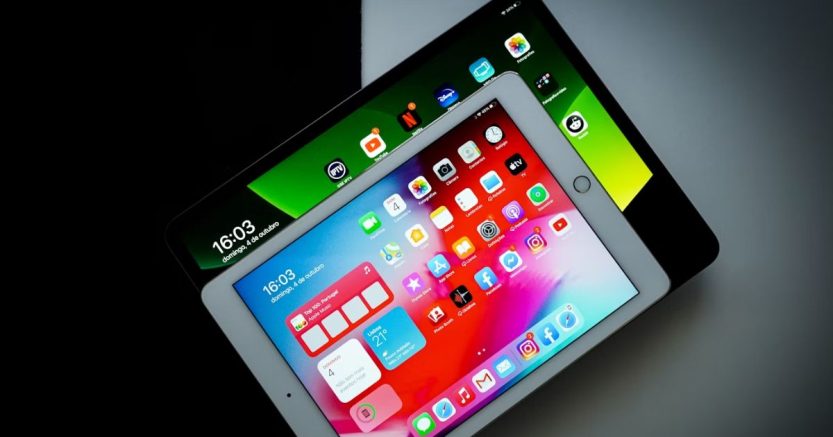Tablets have become indispensable tools in modern life, serving as portable hubs for work, entertainment, education, and communication. Whether you’re streaming movies, sketching designs, or managing your daily tasks, a tablet’s versatility makes it a worthy investment. However, like any electronic device, tablets aren’t immune to wear and tear. Over time, their batteries degrade, performance slows, and what was once a sleek, responsive gadget can feel sluggish and unreliable. The good news? With proper care and smart habits, you can significantly extend your tablet’s lifespan, keeping its battery healthy and its performance snappy for years to come.
This comprehensive guide dives into the science of tablet longevity, offering actionable tips to maximize battery life and maintain peak performance. From charging habits to software tweaks, we’ll cover everything you need to know to get the most out of your device.
Understanding Tablet Lifespan
Before diving into optimization strategies, it’s worth understanding what determines a tablet’s lifespan. At its core, a tablet’s longevity hinges on two key components: the battery and the hardware/software ecosystem. Most tablets rely on lithium-ion batteries, which power everything from the screen to the processor. These batteries have a finite number of charge cycles—typically 300 to 500 complete cycles—before their capacity begins to drop noticeably. A charge cycle is completed when you’ve used (and recharged) 100% of the battery’s capacity, though not necessarily in one go.
Beyond the battery, a tablet’s lifespan is influenced by its hardware durability and software support. Processors, storage, and displays can degrade with heavy use, while outdated operating systems may leave your device vulnerable or incompatible with new apps. Manufacturers like Apple, Samsung, and Microsoft often promise 4–6 years of software updates, but physical care and usage habits play an equally critical role in how long your tablet remains functional.
The average tablet lasts 3–5 years with moderate use, but with the right approach, you can push that closer to 6–8 years. Let’s explore how.
Battery Health
Preserve your tablet’s battery health with smart charging habits, temperature management, and optimized settings. This will extend battery life for longer use.
Since the battery is the most vulnerable component, preserving its health is priority number one. Here’s how to keep it in top shape:
- Master Your Charging Habits: Lithium-ion batteries thrive within a specific charge range—ideally between 20% and 80%. Keeping your tablet in this sweet spot minimizes stress on the battery’s chemical structure. Avoid letting it drain to 0% or charging it to 100% every time, as both extremes accelerate degradation. For example, charging from 20% to 80% daily uses only 60% of a cycle, stretching the battery’s lifespan over more days. Many modern tablets, like iPads and high-end Android models, feature “optimized charging” settings that learn your routine and delay complete charging until just before you unplug. Enable this feature if available—it’s a game-changer. If your tablet lacks it, consider using a smart plug with a timer to limit overnight charging.
- Avoid Extreme Temperatures: Heat is a battery’s worst enemy. Exposing your tablet to temperatures above 95°F (35°C)—say, leaving it in a hot car—can permanently reduce capacity. Cold isn’t great either; below 32°F (0°C), performance may dip temporarily. Store and use your tablet in a cool, dry environment, ideally between 68°F and 77°F (20°C–25°C). If it feels warm during use, give it a break to cool down.
- Use the Right Charger: Always stick to the manufacturer’s charger or a certified alternative. Cheap, off-brand cables and adapters might save a few bucks but can deliver inconsistent voltage, harming the battery over time. Fast charging is convenient, but if your tablet supports it, use it sparingly—higher wattage generates more heat, which speeds up wear. For daily top-ups, a standard 10W–15W charger is gentler.
- Manage Background Power Drain: Apps running in the background can silently sap your battery. Check your tablet’s battery usage stats (found in Settings on iOS/Android) to identify culprits—social media apps and games are common offenders. Close unused apps, turn off background refresh for non-essential ones, and turn off notifications where possible. On Android, “Battery Saver” mode throttles power-hungry features; on iPads, “Low Power Mode” does the same. Activate these when your charge dips below 20%.
- Replace the Battery (When Necessary): If your tablet’s battery health drops below 80% capacity (visible in settings on some devices), consider a replacement. Apple and Samsung offer official repair services, often costing $50–$150 depending on the model. DIY kits exist, but unless you’re tech-savvy, professional service ensures safety and compatibility. A new battery can breathe years of life into an older tablet.
Performance Optimization
Boost your tablet’s performance with regular software updates, free up storage, and optimize multitasking to keep your device running smoothly and efficiently.
A healthy battery is only half the battle—performance matters as much. A sluggish tablet can frustrate even the most patient user, so here’s how to keep it zippy:
- Update Software Regularly: Operating system updates aren’t just about new features—they often include performance tweaks and security patches. Manufacturers like Apple (iPadOS) and Google (Android) optimize updates to run efficiently on older hardware. Check for updates monthly via Settings and install them promptly. Delayed updates can lead to app incompatibilities, slowing your device over time.
- Free Up Storage Space: A cluttered tablet is a slow tablet. When storage nears capacity, the system struggles to manage files and cache. Aim to keep at least 10–20% of your storage free—on a 64GB device, that’s 6–12GB. Delete unused apps, clear cached data (Settings > Storage), and offload photos/videos to cloud services like Google Drive or iCloud. External storage (via USB-C or microSD, if supported) is another option for media-heavy users.
- Restart Regularly: Restarting your tablet clears temporary files and refreshes the system. Make it a habit to reboot once a week—or more if you notice lag. This simple step can resolve minor glitches and keep background processes in check.
- Limit Multitasking: Tablets handle multiple apps better than ever, but overloading the processor taxes performance. Stick to 2–3 active apps at a time, especially resource-intensive ones like games or video editors. Swipe away unused apps from the multitasking view to free up RAM.
- Factory Reset as a Last Resort: If your tablet feels bogged down despite tweaks, a factory reset can restore it to like-new condition. Back up your data first (photos, documents, app logins), then reset via Settings. This wipes accumulated junk and outdated settings, but it’s time-consuming, so use it sparingly—once every 1–2 years is plenty.
Physical Care
Protect your tablet with a sturdy case, screen protector, and regular cleaning. Proper handling and maintenance help extend its lifespan and prevent damage.
A tablet’s internals rely on its exterior staying intact. Here’s how to safeguard the hardware
- Invest in a Case and Screen Protector: Drops and scratches can damage ports, buttons, or the screen, leading to costly repairs. A sturdy case—preferably with shock-absorbing edges—and a tempered glass screen protector are cheap insurance. Brands like OtterBox and Spigen offer durable options for most models.
- Clean It Properly: Dust and debris can clog ports and speakers, affecting performance. Use a microfiber cloth to wipe the screen and a small brush (or compressed air) for ports. Avoid liquids near openings, and never use abrasive materials.
- Handle with Care: Avoid bending your tablet or stacking heavy objects on it—internal components like the motherboard are delicate. When traveling, store it in a padded sleeve or bag compartment.
Usage Habits
Adopt smart usage habits like dimming your screen, turning off unused features, and avoiding overheating to boost your tablet’s lifespan and performance.
How you use your tablet shapes its lifespan. Adopt these habits for long-term success:
- Dim the Display: The screen is a major power hog. Lower brightness to 50% or enable auto-brightness, which adjusts to ambient light. On OLED tablets (like some Samsung Galaxy Tabs), use dark mode to save energy and reduce pixel wear.
- Turn Off Unused Features: Wi-Fi, Bluetooth, and GPS drain battery when idle. Toggle them off when not needed—Airplane Mode is a quick fix for travel or downtime. Also, turn off haptic feedback and reduce animation speeds (in Developer Options on Android) for a slight performance boost.
- Choose Lightweight Apps: Not all apps are created equal. Opt for lightweight alternatives—say, Google Docs over Microsoft Word—or web versions via a browser. Check app reviews for efficiency ratings before downloading.
- Avoid Overheating During Use: Gaming or streaming for hours can overheat your tablet, stressing the battery and processor. Take breaks every 1–2 hours, and avoid using it while charging under heavy load. A cooling pad (designed for tablets/laptops) can help during marathon sessions.
The Bigger Picture
Maximizing your tablet’s lifespan isn’t just about convenience—it’s eco-friendly. Electronics contribute to e-waste, with millions of tons discarded yearly. By extending your device’s life, you reduce landfill impact and the demand for new lithium mining. When it’s finally time to upgrade, recycle your old tablet through manufacturer programs (Apple, Samsung) or local e-waste centers.
Still, know when to let go. If your tablet can’t run modern apps or its hardware fails beyond repair, a new model might be more cost-effective than endless fixes. Balance longevity with practicality—6–8 years is a solid run for most devices.
Maximizing Your Tablet’s Lifespan
With the proper care, your tablet can remain a reliable companion for years. Charge smartly, optimize performance, protect the hardware, and adjust your habits—these steps don’t just preserve battery life and speed; they enhance your overall experience. Whether you’re a casual user or a power enthusiast, this guide equips you to squeeze every ounce of value from your device. Tablets aren’t cheap, but with a little effort, they can outlast expectations, proving that longevity is as much about strategy as it is about technology.


